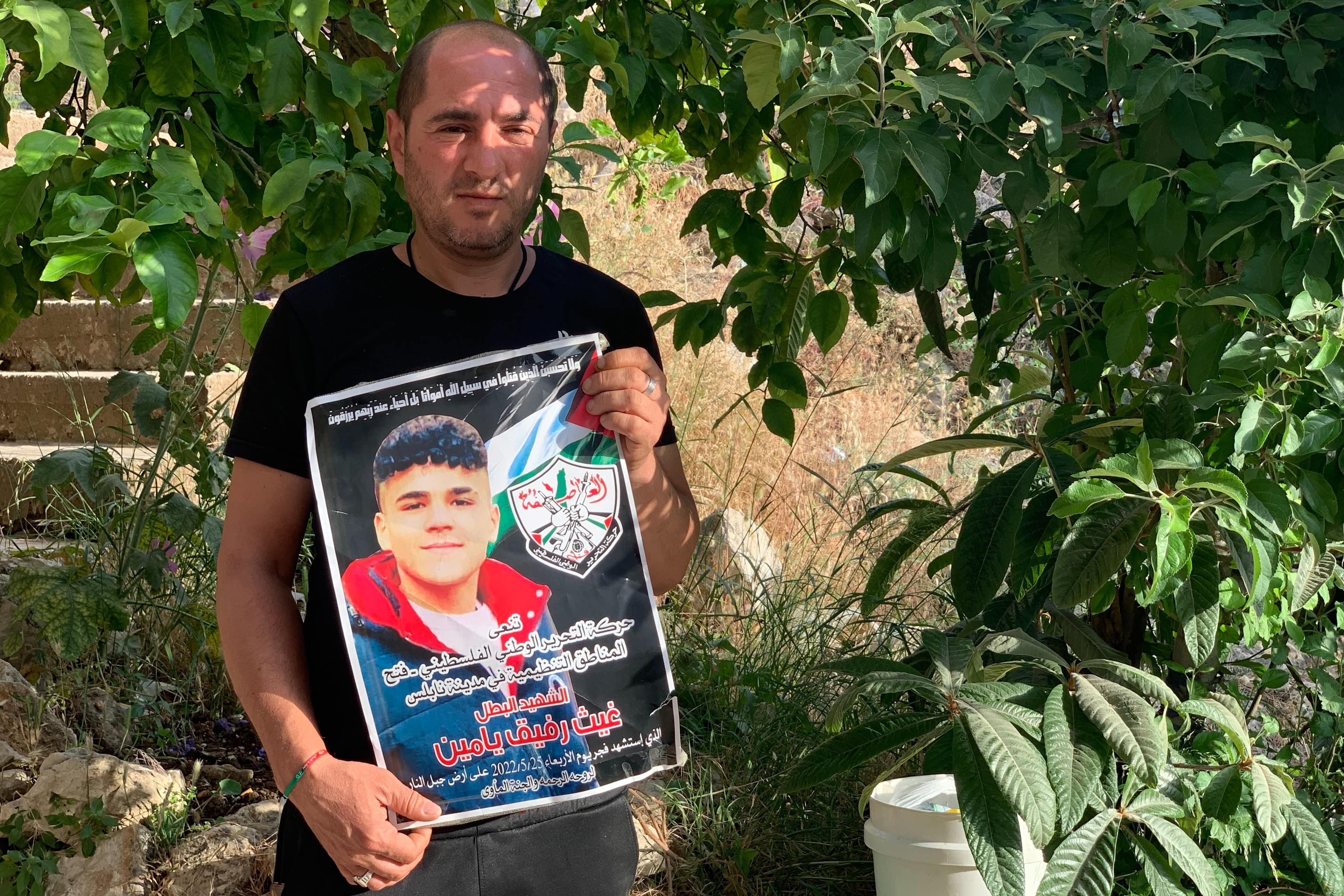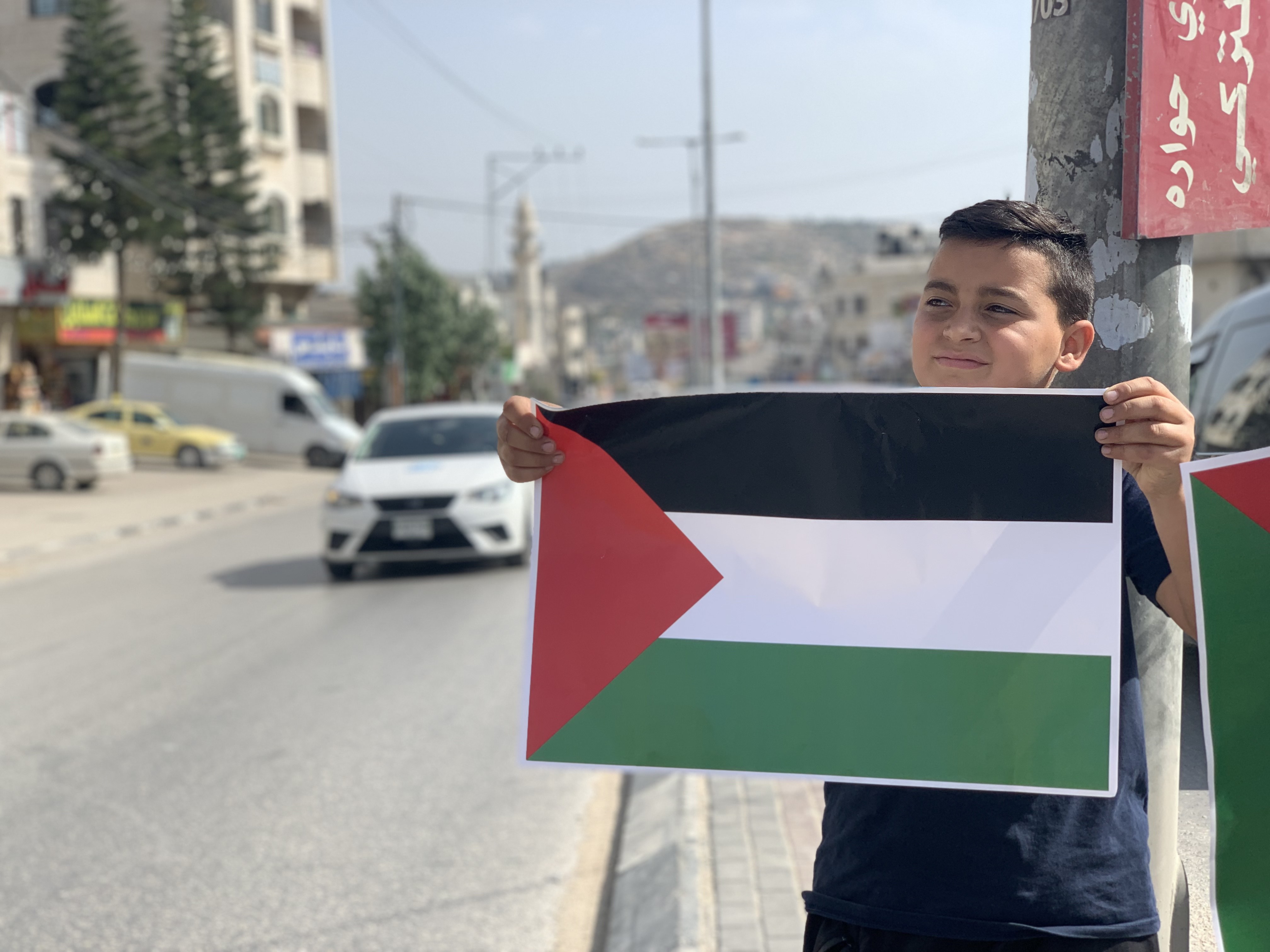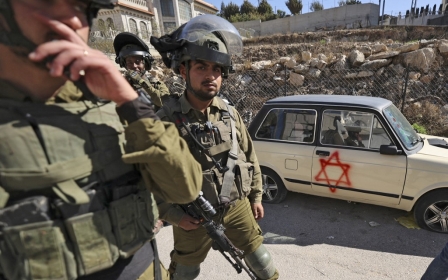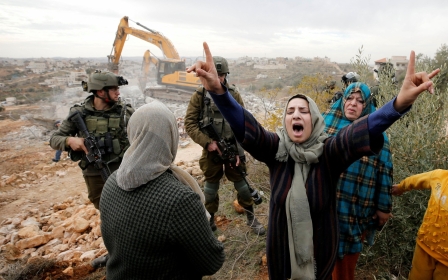West Bank: How Nablus became the main hub for Israeli settler violence
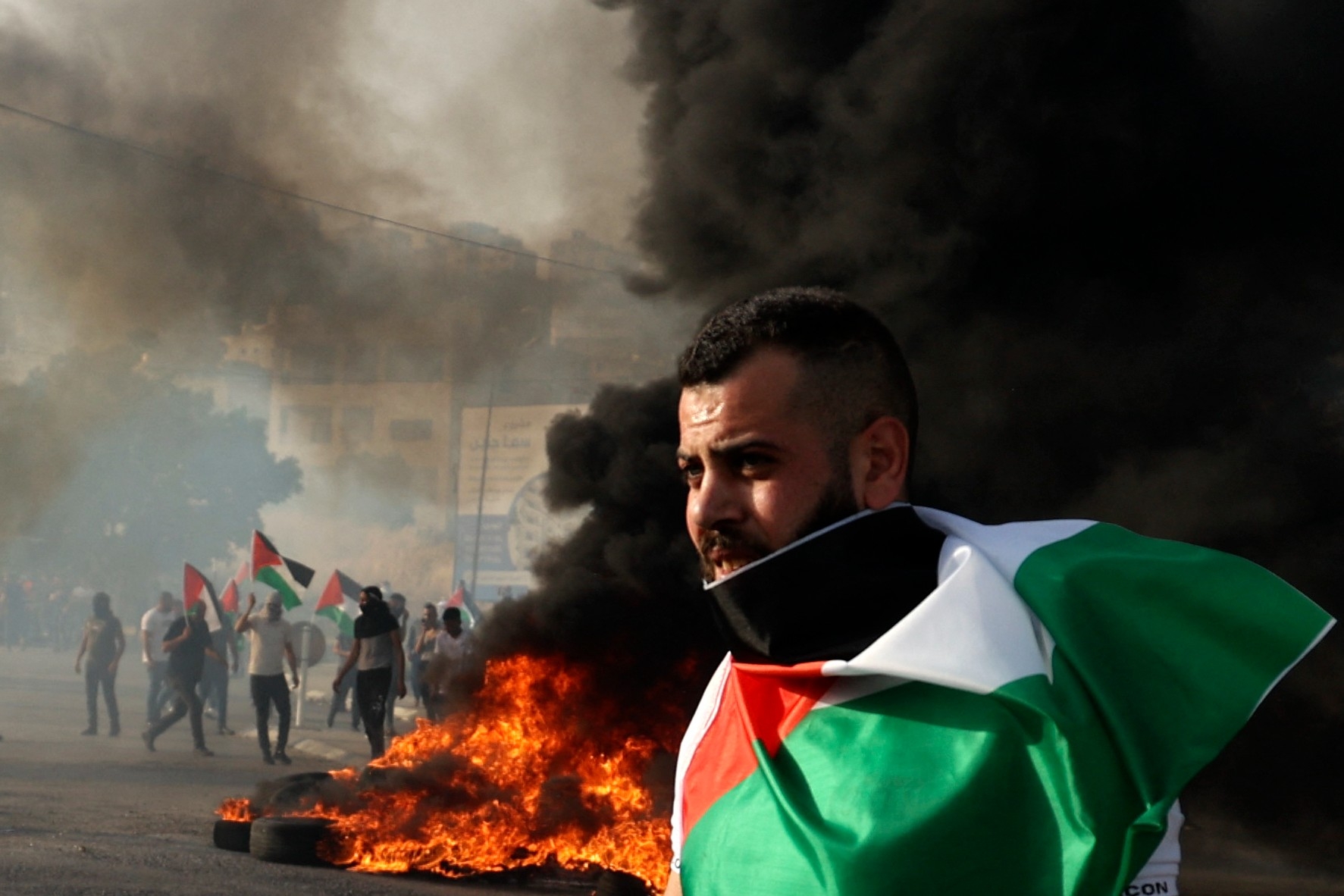
On the evening of 25 May, Rafiq Yamin was waiting for his two teenage sons to return home when a phone call came that would turn his family's life upside down forever.
It was one of the pair, Ziad, 19, informing him that his other son Laith, 16, had just been killed by the Israeli army.
It was a tense day in the occupied West Bank city of Nablus, as Laith, with dozens more Palestinians, went out to confront Israeli soldiers escorting large groups of settlers through their city.
The settlers, protected by the army, were on their way to visit Joseph's Tomb east of the city, a site of symbolic and religious importance to the Palestinians.
Also revered by Jews, the site has always been a flashpoint. But as residents of Nablus have found themselves under increasing assaults by settlers and soldiers in recent months, old wounds are reopening.
New MEE newsletter: Jerusalem Dispatch
Sign up to get the latest insights and analysis on Israel-Palestine, alongside Turkey Unpacked and other MEE newsletters
The tensions are now spreading beyond the tomb, as towns and villages surrounding the northern West Bank city, particularly to its south, get sucked into confrontations - and a newly formed armed Palestinian resistance brigade has emerged.
It was against this backdrop that Laith had insisted on joining other Palestinian youth in standing up to settlers, despite Ziad's unease about the possible repercussions.
'I lost a part of me'
Laith had been frequenting Joseph's Tomb to take part in confrontations aimed at blocking settler visits - seen by Palestinians as incursions - particularly over the past two months, when the situation began to escalate.
On 25 May, upon learning that Laith had headed there, Ziad said he felt more worried about his brother than usual.
"As soon as I learned that Laith had gone with his friends, I followed him to bring him back home," Ziad told Middle East Eye. "I was worried and afraid for him; I had a feeling that night was going to be difficult."
'As we were leaving the area, Laith suddenly began screaming and dropped to the ground. I saw his head explode, his blood everywhere and his brains had come out'
- Ziad, Nablus resident
Ziad found his brother and asked him to come back with him, but Laith wanted to check up on his friends first before returning, as the danger was high due to the spread of Israeli snipers in the area.
"As we were leaving the area, Laith suddenly began screaming and dropped to the ground. I saw his head explode, his blood everywhere and his brains had come out. I was scared and flustered - I just screamed for help - I couldn't get close to him to carry him," recalled Ziad.
That day, the Israeli army violently dispersed the Palestinian crowds, firing live ammunition, rubber-coated steel bullets and tear gas, leaving at least 80 Palestinians wounded.
The bullet that hit Laith had killed him instantly.
"I knew how bad Laith's injury was, but I had hope that I wouldn't lose him. I wanted to take him home with me. Today, I go back home alone," said Ziad, who spends long hours of his days by his brother's grave.
Their father, Rafiq, cannot hold back the tears when his slain son is mentioned in conversation.
"Days before his martyrdom, I was watching him and I noticed that he had grown and increased in height. I was proud of him," Rafiq told MEE.
"Laith loved to play and accompany his friends all the time, and I didn't mind because they were always near the house, and I felt reassured of his safety."
Laith was a smart and diligent boy at school, his father said, and he dreamed of completing his education. At home, he was helpful to his family.
"He was my right hand - I depended on him for everything," Rafiq said.
"I did not lose one of my sons, I lost a part of me, I feel like I lost my soul. Life will be very difficult without him, and we do not know where we will get the patience to deal with parting from him."
A confrontation point
Laith was not the first Palestinian killed by the Israeli army near Joseph's Tomb. The site has frequently been one of the most violent and heated areas of confrontation in Nablus since settlers began raiding it following the 1967 Israeli occupation of the West Bank.
The most violent of these confrontations took place during the popular uprising of 1996, and the Second Intifada between 2000-2005. Armed clashes took place in the area, which led to the death of both Palestinians and Israelis.
Israeli settlers believe that the shrine contains the tomb of the Prophet Joseph - a figure revered in both Islamic and Jewish tradition - while Palestinians believe the shrine is the burial site of Sheikh Youssef Dweikat, a cleric who lived in the nearby Balata neighbourhood.
Based on the Oslo Accords, Joseph's Shrine is considered a Jewish holy site under Israeli control, even though it is located in "Area A" - meant to be under full civil and security control by the Palestinian Authority - and is registered as an Islamic endowment at the PA's Department of Endowments in the city of Nablus.
The shrine dates back thousands of years according to some experts but the authenticity of the competing claims about it have been questioned.
The current structure dates back to the 19th century an stands as a key heritage site in local Palesitnian history.
Abdullah Kalbouneh, an expert on Islamic archaeology in Nablus, said that one of the historical narratives about the shrine is that in 413 AD, the Christian fathers assigned the former Roman emperor, Theodosius the Younger, to collect the presumed bones of the fathers of the Children of Israel.
Coming to Nablus during the Byzantine-Roman period, he found a stone tomb without bones, according to one of the ancient manuscripts, Kalbouneh told MEE. Beneath it, he found a stone coffin made of alabaster, inside which he found bones that he believed to belong to the Prophet Joseph, and sent them to Constantinople, to the Church of Constantine the Great in Istanbul.
'The shrine is associated with many of our memories, and we still dream of reclaiming it'
- Mazen Dweikat
Kalbouneh asserts this narration confirms that if the site contained the bones of the Prophet Joseph, they were moved and are no longer there.
While it hasn't been proven that the site contained Joseph's tomb, the narrative still points to it, particularly as it was restored over the years.
Prior to the West Bank's occupation in 1967, the people of Balata would visit the place weekly and organise religious and social activities there. They also added a building to it and designated it as a school for children.
Mazen Dweikat, 60, is one of the neighbourhood's residents who studied at the school, but like other Palestinians he has not been able to enter it since Israel seized it in 1967.
"I remember that every Friday, we and the rest of the families would prepare food and get together at the shrine for long hours. It would also be the launching point for religious and social celebrations," Dweikat told MEE.
"The shrine is associated with many of our memories, and we still dream of reclaiming it."
A quiet town erupts
The renewed tensions around Joseph's Tomb are not happening in a vacuum.
Nablus and its surrounding towns and villages have witnessed a rise in settler violence in recent months - including the use of live fire, physical assaults, arson attacks and uprooting of olive trees - prompting Palestinian anger and subsequent army crackdowns.
According to UN data, more than 606 Palestinians were injured this year so far in settler-related incidents across the West Bank, of which 217 were in Nablus alone. Around 12 of those injuries in Nablus were bullet wounds, killing one Palestinian.
It has been particularly edgy south of Nablus city in the Palestinian town of Huwarra.
Since 17 May, Huwarra was transformed from a quiet town through which Israelis pass on their way to their settlements, at times making stops at Palestinian shops, especially garages, into one mired in confrontation between residents and settlers.
Wajeeh Odeh, the deputy mayor of Huwarra, which lies on the main north-south highway of the West Bank Route 60, said tensions began when settlers started replacing Palestinian flags with Israeli flags in the town, a provocative act seen by residents as an insult to their existence and dignity.
Palestinians then started a campaign of raising the Palestinian flag across Huwarra. Whenever the army or settlers removed them, the people would reinstall them.
Huwarra is home to 7,000 Palestinians, and is encircled by settlements. According to Odeh, about 80 percent of its lands have been sequestered for the construction of Route 60 and the Jewish settlement of Itamar.
"The army has long been present around the clock in the village to secure the settlers' passage, but it has increased both its presence after the recent events and its attacks and provocations against people," Odeh told MEE.
Huwarra is strategically located in the centre of villages south of Nablus, connecting them to each other and to the city.
Odeh said that the army had deliberately imposed collective punishment policies on the town, which extended to all the surrounding villages.
The army, he said, closed nine sub-entrances that connect Huwarra's different neighbourhoods with earth mounds, resulting in huge congestion on the main street to which all traffic was diverted.
Meanwhile, tensions remain at a high in Nablus' other villages, with confrontations escalating the closer they are to settlements, where Israelis have increased their attacks on Palestinians.
Further escalation?
The new element in the recent confrontations has been the return of shootings targeting Israeli army checkpoints, which have been claimed by the Nablus Brigade, a new group of armed Palestinians who say they are part of Saraya al-Quds, the military arm of the Islamic Jihad movement.
In a brief statement on 29 May, the brigade claimed a shooting attack that targeted the Israeli army at the Huwarra checkpoint during confrontations taking place in the area.
Five days earlier, the brigade carried out two attacks targeting the Beit Furik checkpoint and a centre for settlers in Nablus. They also claimed a third operation targeting Israeli soldiers in the vicinity of Joseph's shrine.
Recent events in the Nablus governorate may be an indication of further escalations in the coming weeks. However, an intervention by the Palestinian Authority (PA), which enforces a tight security grip on the West Bank, may slow down or suppress the security situation.
While people in other areas are usually ready to speak to journalists, meeting Laith's family was not easy. One of his relatives held MEE's reporter for an hour, saying an approval from a PA security figure in the city is first needed for interviews.
Meanwhile, the PA has stepped up its pursuit of young Palestinian men, particularly those who have taken part in confrontations at Joseph's shrine.
Lawyer Muhannad Karaja said that the security services have arrested at least five Palestinians, interrogating them based on their participation in the confrontations, and summoned others from the Balata and Askar refugee camps and from Nablus city.
The PA has tried to contain the reality of the confrontations in Huwarra, and stressed the need for the situation to remain calm.
This article is available in French on Middle East Eye French edition.
Middle East Eye delivers independent and unrivalled coverage and analysis of the Middle East, North Africa and beyond. To learn more about republishing this content and the associated fees, please fill out this form. More about MEE can be found here.


